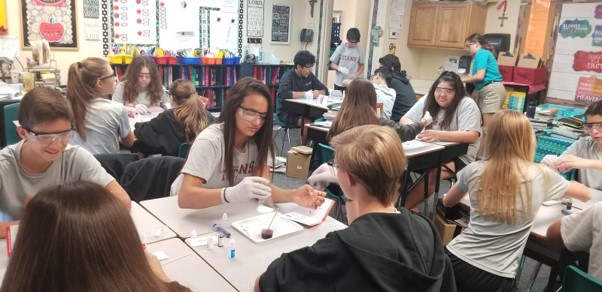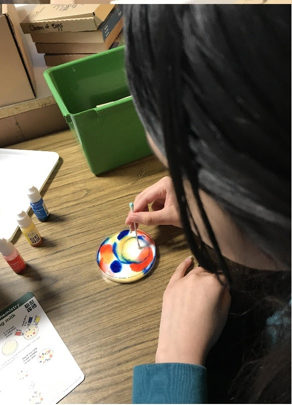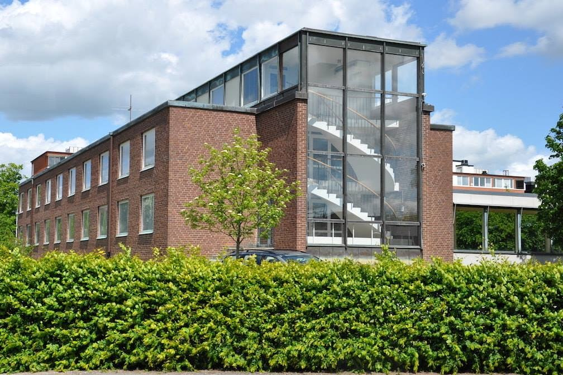How can we improve the effectiveness of vaccines against influenza?
This week 17 years ago Hong Kong government ordered the entire population of 1.4 million chickens to be killed. The reason for their action was the spread of novel and potentially pandemic and deadly new type of bird flu, termed H5N1. What is influenza and why we still cannot find effective treatment against it?
The famous bird flu
There are three types of Influenza: A, B and C. While B and C are annoying but not very dangerous, Influenza A is far more dangerous and deadly. In 20th century, three pandemics of Influenza A killed more than 100 million people altogether. The famous Spanish flu (H1N1) pandemics, happened in 1918, killed more people than the World War I. Russian actress Vera Kholodnaya and Portuguese artist Amadeo were the victims of Spanish flu, while Walt Disney and British Prime Minister David Lloyd George were amongst the survivals. This type of Influenza is called Spanish because the real numbers of victims were censored in France, Britain, USA and Germany but not in Spain, creating a false impression that Spain suffered from the flu more than other countries.
Structure of the H5N1 virus
You have probably heard the term “H5N1” but do you know what does this actually mean? Influenza A virus is a complex of proteins, lipids and nucleic acid. This complex consists of a capsule containing proteins helping the virus to enter to and release from the host cell and the genetic material kept inside:

In case of Influenza viruses, the genetic material is stored in form of RNA, rather than DNA, more common for other species.
Two proteins help the flu virus to enter the host cell and being released. Protein called hemagglutinin attaches to the cell and causes the transmission of the virus inside the cell. Another protein, neuraminidase, is an enzyme helping the virus to be released from the cell. And this is where the viruses’ names come from: H stands for hemagglutinin, while N stands for neuraminidase. For example, H5N1 contains type 5 hemagglutinin and type 1 neuraminidase.
Virus - shapeshifter
Why our immune system does not fight influenza effectively and why haven’t we designed a vaccine that would prevent any influenza? The problem is that Influenza virus mutates too quickly. Literally every year new types of influenza appear, making previous vaccines ineffective. There are two main mechanisms of this variability.
-
Single nucleotide changes frequently occur when the virus’s genome replicates inside the host cells.
-
Second mechanism is related to the exchange of two different parts of the viral genome between two viral types if both infect the same organism. This mechanism is particularly dangerous because it can generate a new type that can be transmitted from human to human. Currently humans can catch bird flu mostly from other animals and rarely from other humans.
Watch the video about influenza
Figth the flu
This may sound spooky but we should not worry too much. Virologists and immunologists are working on the problem of increasing the effectiveness of the flu vaccines. How can this be achieved? While some parts of the virus genome are highly variable, others are more conserved. Typically they encode functionally important parts of the viral proteins that are required for the virus to enter the host cells and being released. These parts of the proteins can be used as a basis for immunisation.
Another way to fight the viral variability is to use mathematical modelling to PREDICT the evolution of the virus and generate vaccines against types that have not appeared yet but will likely appear in the nearest future. This may sound surprising but recent progress in DNA sequencing methods and bioinformatics made this strategy feasible.
See also

CASE STUDY - 8th Grade students at St Timothy's Catholic School use MEL Chemistry to enhance their science lessons
Saint Timothy Catholic School in Mesa is committed to promoting academic excellence in each child it looks after. They encourage self-discipline, self-respect, and respect for others. They understand the importance of engaging students in a comprehensive and relevant curriculum. As a result, the middle school science teacher from St. Timothy Catholic School is using MEL Chemistry subscriptions to enhance and expand their range of learning activities.

CASE STUDY - MEL Chemistry allowing pupils to reach their full potential
The Empower Learning Center is the Alternative Learning Program (ALP) within the Hinckley-Finlayson School District. They offer non-traditional education options for students ages 16-21 in their daytime program, night school for traditional high school students who need to make up credits, and night school for adults 18 and older who would like to complete their diploma or equivalency.
The school was seeking engaging, hands-on chemistry kits to make their science classes more interactive, and to help their students understand key science concepts and achieve their full potential in chemistry.

CASE STUDY - MEL Chemistry at Lund International School, Sweden
Emma Taylor, a science teacher at Lund International School (Sweden), has chosen MEL Chemistry sets as the best option for her students’ science classes. In Lund International School, all programmes are taught in English, and having chemistry sets in English are a great asset to accompany science classes.
Here, Emma shares her experience of how MEL Chemistry sets improved her students’ comprehension and understanding of science concepts.